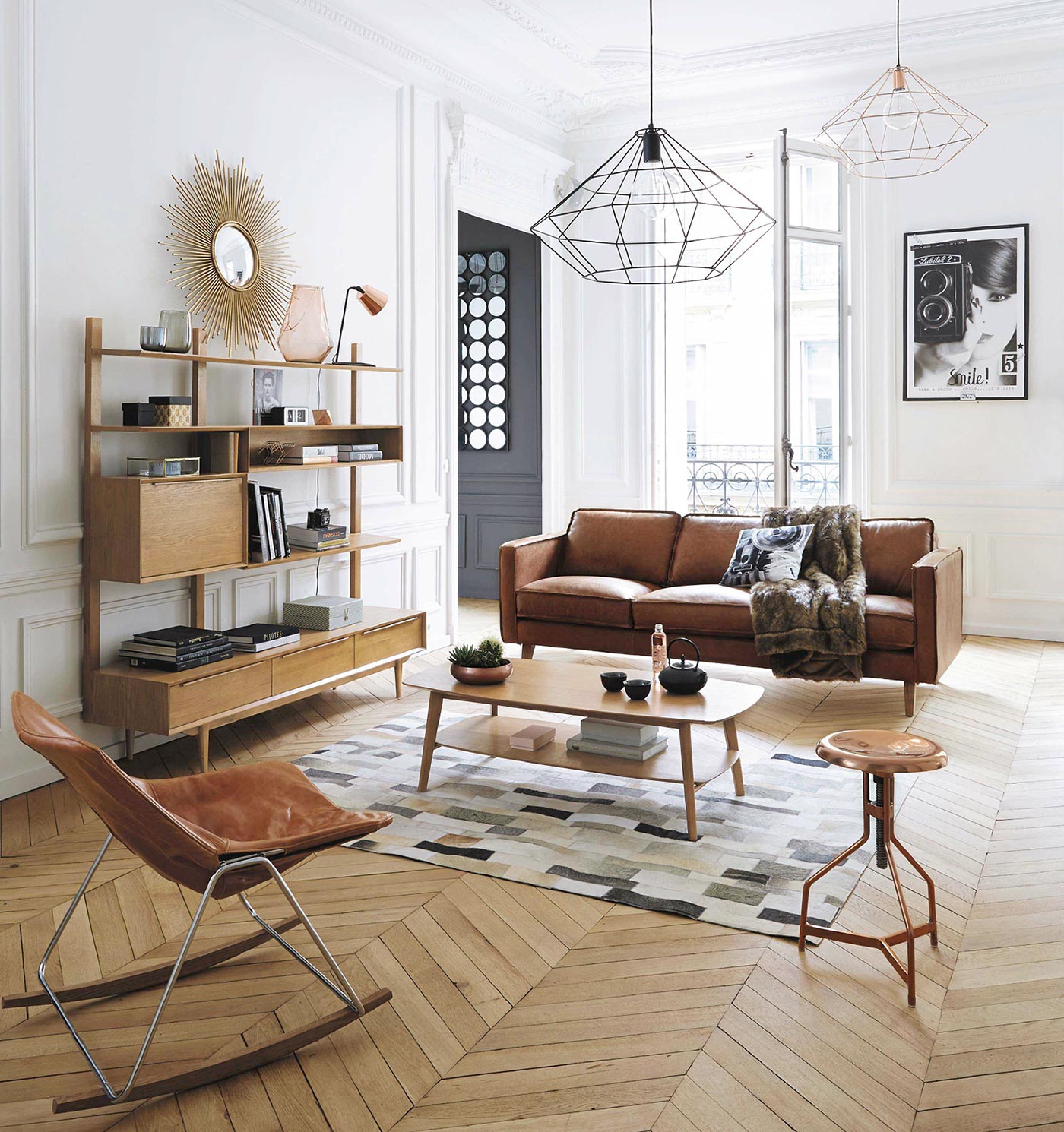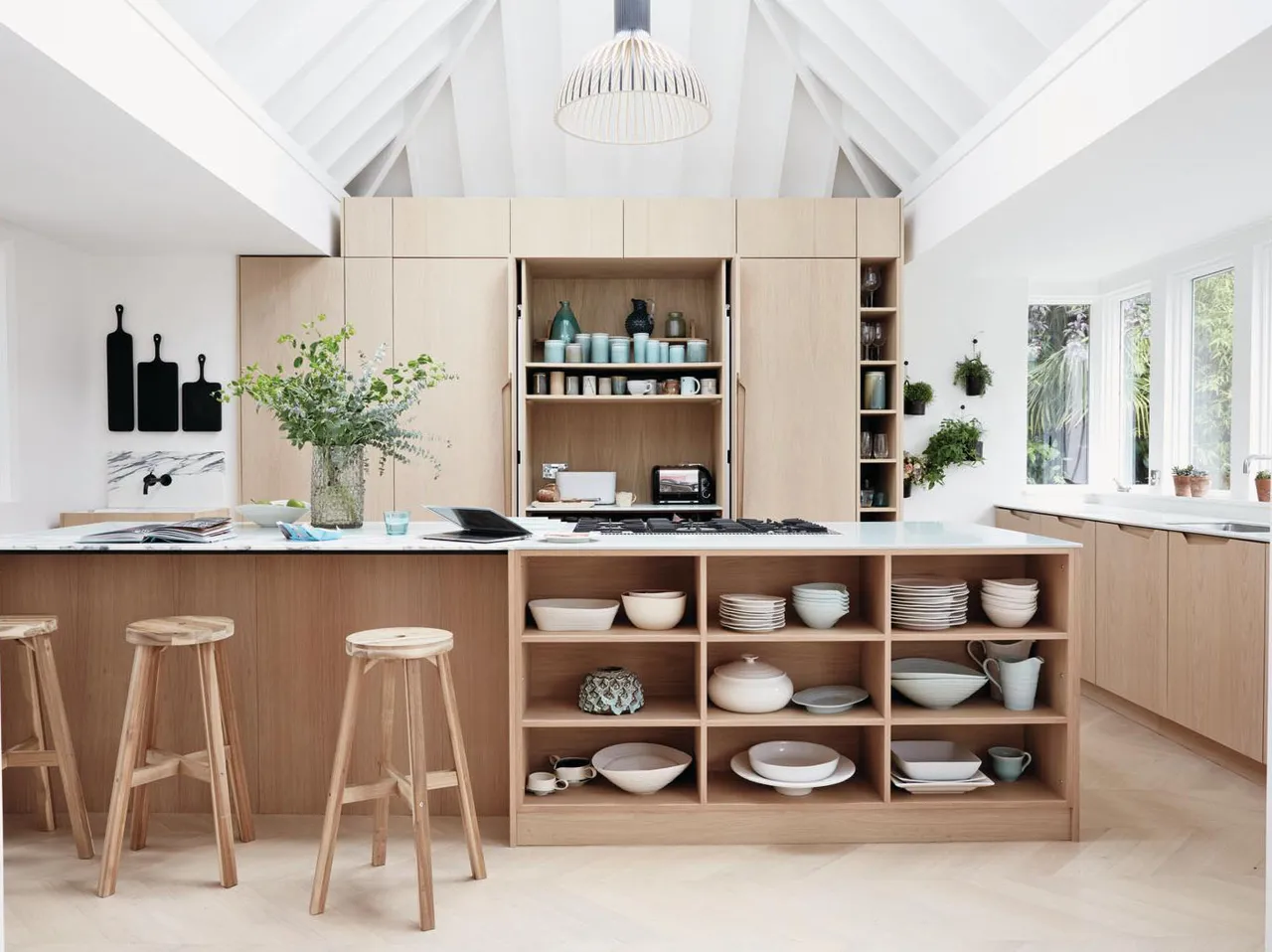Styles That We Expect to be Popular in 2022
In an ever-changing world, it can be hard to keep track on the latest trends, especially when it comes to interior design. But don't worry, we're here to help 😉.
Coded by Esha Iqbal

Coded by Esha Iqbal


All of the trendy design styles you see in regular homes scope somewhat under the modern style, which is an umbrella term for design styles united by a common intention: to celebrate materials, technology and composition through authenticity, transparency and efficiency. The aesthetic is centred on the belief that form should combine with function.
Inspired by the Modernist art movement that preceded it, the Modernist style, born at the dawn of the 20th century, reinvented our relationship with space and aesthetics to bring us closer in touch with it. A building was more than an inhabitable shell; it was now a machine for living in.
Modernist interiors are therefore often a complex overlay of functional programming, careful compositions and clearly articulated lines and geometry. The inherent materiality of a form is an integral part of the design language here, as is an emphasis on visual and functional simplicity.
Lets now move on to the 3 design styles that will dominate 2022:

Mid century modern design is known for combining sleek lines with organic shapes, using new materials, and methods to reimagine traditional pieces. Rooted in the Industrial Revolution and Post-War Era, the emergence of mid-century modern design began in the middle of the 20th century in America, taking shape in the 1930s and lasting well through to the 1960s.
A question commonly asked is if there is a difference between mid-century modern and modern. They're two of the same and are used together to define 1) an era 2) a style. Mid century refers to the era of the 1930s - 1960s, whereas Modern is used to describe the present day and the future. Mid century modern defined the longevity of the style through the materials and technology that were used to continue the manufacturing of iconic pieces, through brands including Herman Miller and Florence Knoll.
In the words of Sotheby's Joshua Holdeman, mid century modern furniture and decor are “simply well-designed objects, with a timeless look.” Defined by organic shapes, minimal decor, and a love for materials, mid century modern can be relatively simple to emulate at home.
One of the key principles that define the mid century modern design is the idea that 'form follows function'. That's to say that furniture, objects, and buildings influenced by the modernism movement are designed to reflect their intended purpose; that's to say if they prove not to be practical, then they're not needed. You can see why it is a branch under the umbrella 'modern' term.
With its wonderful combination of new and old materials, there's no question why this is and has been a very popular interior design style. We predict it wil continue to be trendy in 2022, especially with the continuous trend of minimalism and blend of aestheticism with functionality.
Lets now move on to the next style under the 'modern' umbrella:

Scandinavian has become a to-go design choice of our time; its popularity has soared and understandably so. The term itself conjures an image of simple, clean aesthetics, white walls, and neutral-coloured furniture that aligns beautifully with minimalist decor. The style is loved by many and can be achieved in any home affordably. No matter your budget or size home, the Scandinavian way of living works with you to design a space that is your sanctuary to come back after a long day.
A style is known for its simplicity, Scandinavian interior design can be defined by its minimalistic look (although not to be mistaken for minimalism), using a rich blend of textures and a soft selection of hues to create a warm, cosy feel.
Much like the modernist era, Scandinavian design looks to functionality and utility to influence the physicality of a room with a few nooks in between. You'll notice a minimal approach to furniture when it comes to Scandinavian homes, allowing light and air to move around the room seamlessly. That said, the concept of “beautiful things that make your life better” ripples throughout Scandinavian design qualities, therefore, making it as much about functionality as it is about beauty.
When we refer to Scandinavian design, we refer to the collection of northern European countries including Norway, Sweden, Denmark, Finland, and Iceland that make up Scandinavia. What has since become an interior phenomenon, Scandinavian design has its roots in a wealth of history dating back to the 1800s and later flourishing during the early 1900s.
Scandi design was in part a rejection of the old world, as colonialism and aristocratic power began to wane following the first and second world wars. Democracy, wealth and the attainment of beautiful things were no longer just the preserve of the elite but becoming available to all. Following a series of design conferences across Scandinavia in the 1940s and championed by, the then editor of House Beautiful, Elizabeth Gordon, across Canada and the US in the 50s, the Scandi movement become a major interiors force. Thanks to designers such as Alvar Aalto, Arne Jacobson and the founder of Ikea, Ingvar Kamprad, Scandi design is now well recognised and enjoyed by millions.
This was the same era mid century modern was centre stage of alternative interiors; the two combined made it visible to the world that good design could be, and should be, accessible to everyone.
Last but not least, onto the last style we think will dominate 2022...

The word Zen is the Japanese pronunciation of the Chinese term 'Ch'an' which in its turn is actually the Chinese way of pronouncing 'Dhyana', the Sanskrit word for the concept of meditation. Nowadays, the term Zen is used to describe a state of self-awareness of our place in the universe as well as being at peace with our thoughts.
Asian Zen interior design is therefore a style that focuses on
emphasizing a sense of harmony, balance, tranquility, and simplicity
in your home.
It draws inspiration from both the concept of Zen and the importance
of incorporating nature into your décor, often found in Asian homes.
The result is a unique interior style that's simple and minimal but
also features rich layers.
The Japanese of course originally pioneered this design concept. Throughout history, the Japanese have promoted beauty through simplicity. By placing value on the essential elements and not any additional embellishment, less can mean more from a design standpoint.
However, although this type of interior design values simplicity, there are many elements to this sort of styling to take into consideration.
This interior design style can also be combined with the Scandinavian style to produce the design style: Japandi. As its name suggest its a mixture of Japanese and Scandinavian interior design.